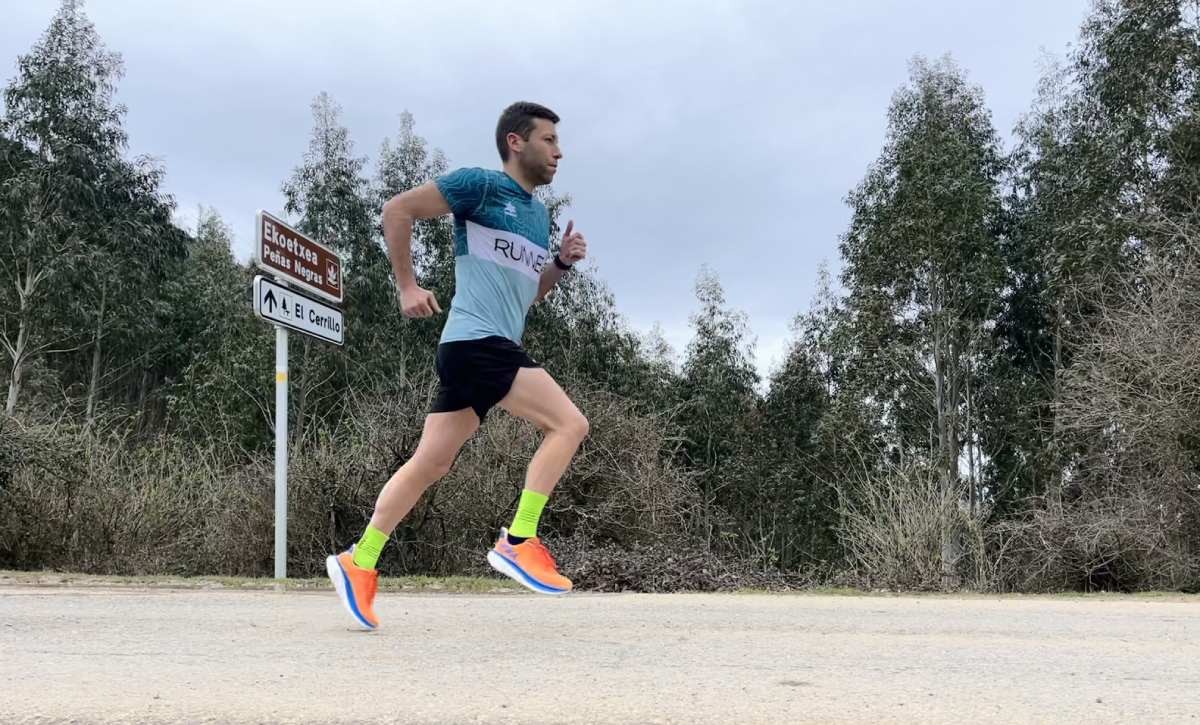You may be interested in:
Surely at some point you have heard that running is a discipline that is included within endurance sports. Sports that are characterized by being formats that have a medium or high duration and in which the aerobic cardiovascular component acquires a special importance. After all, running pursues the objective of "resisting" to cover a certain distance or time stride after stride.
Not sure which shoe to choose?
In a few simple steps we help you to choose the ideal running shoe for you.
GO TO THE RECOMMENDER
Although our main focus has always been and continues to be running, and although we love to put on our running shoes, I'm sure many of you know that running is not the only endurance discipline. As far as physical capacity is concerned, swimming and cycling are very similar to athletics and are also considered endurance sports.
Due to the predilection of a significant percentage of runners to go cycling at certain times of the preparation or the season and the boom in its practice in recent years, in the following lines we would like to talk about cycling. Not to explain what it is, nor to talk about cycling races or marches, but to talk about why combining running and two wheels can be a good way to improve performance, as well as having other added advantages.

Is it interesting to introduce cycling sessions in my running routine?
Roughly speaking, the answer is yes, but this statement is not valid for all types of contexts and times. You should therefore be clear about certain aspects before taking to the road or the mountains with your bike in order to combine it with running.
Level and experience
The higher the level or athletic condition , the greater the need to include a greater number of running sessions to maintain or improve fitness. Therefore, including at least one cycling session per week can be interesting to avoid impact to a certain extent, without affecting the cardiovascular component.
In addition, wise say that experience is a degree. The most experienced runners know how to boost their performance with the least possible effort and resources, so replacing a running session with a cycling route can be beneficial both physically and mentally and, as mentioned above, not have a negative impact on performance since the rest of the weekly sessions guarantee the maintenance and/or improvement of physical fitness.
Age
We all know that as the years go by, in addition to a gradual reduction in performance, the joints and musculature are affected to a greater extent due to the greater negative effect that the impact against the asphalt causes. Although a stronger musculature is the best way to prevent discomfort or injury, it does not guarantee that the older we get the more likely we are to have to stop physical activity due to various physical problems.
Planning one or two cycling sessions per week can be a good way for older cyclists to ensure that they can continue to ride for longer, while maintaining better muscle, tendon and joint health.
Injury history
An injury-prone runner or a runner with recurrent episodes of injury in a particular area can benefit greatly from eliminating some of the impact the body experiences when running. Logically, the greater the exposure, the greater the risk of injury, so although to improve our running performance we must prioritize running sessions, we must be clear that we must introduce alternative training methods if we do not want to have a tendency to constant relapses.
Frequency of training
One of the factors that can determine the inclusion of cycling sessions within the training plan alludes to questions of frequency, that is, the number of sessions per week. If within our routine we have established few weekly sessions, that is, between one to three sessions, it is more interesting to dedicate that time to running, since in addition to needing that minimum stimulus to progress, it allows us to have several days of rest to recover the effort made in training.
On the other hand, if we are already in the habit of running more than four sessions a week, we can consider a weekly cycling session. The decision will also depend on the other factors mentioned in this section.

Taste for the discipline
There is no point in weighing up the combination of running and cycling sessions if the two-wheeled discipline does not really arouse any interest or motivation in us. It may also happen, even if we can do indoor cycling or rolling sessions, that we are afraid of riding a bike for fear of road traffic or because of the technical complexity of the routes. In this case, we can avoid the impact by opting for other disciplines that generate similar demands, such as swimming or indoor rowing.
How can I combine running and cycling?
It depends. And what does it depend on? Well, it depends on the type of sessions you are doing during the different moments of the season, because as we all know, we do not always train the same depending on the objective we have, either competitive or at a more personal level. In addition, it is not only important what volume and intensity we do when running, but also how we go out cycling.
We can be in the case that we have experience in cycling and we are able to perform sessions at low intensity without suffering too much. But it may happen that we are new in cycling, so that at the slightest activity the effort can be considerable. The type of surface also plays a role. In general, mountain biking is more demanding due to the variety and technicality of the routes. Therefore, depending on the stress generated by cycling sessions, we can evaluate how to combine them with running sessions.
As a general recommendation, the most interesting thing for runners is to include cycling on the day after a demanding day of running, either for high intensity, but also for long sessions at low intensity. It can also come in handy the day after a demanding strength training session.
Combine running and cycling, but learn how to prioritize
Introducing a cycling session between two days of running is the simplest and most useful decision when we have any doubts about how to do it. All this being aware that unless we are interested in "squeezing" and raise the heart rate on the bike because we can not do it running, our goal when cycling should be to do it at low intensity, enjoying and having a good time practicing another discipline, which in addition to preventing injuries and change of chip, will allow us to continue to maintain and even improve our physical condition.
Although at first it may be somewhat difficult to regulate the intensity, take cycling sessions as a means to recover from the most demanding running sessions and as sufficient stimulus to cause the physiological adaptations necessary to improve the pace.

Read more news about: Running Training






























